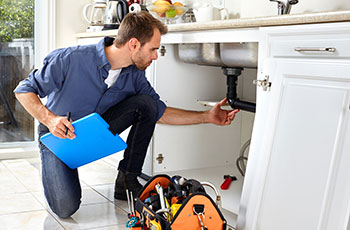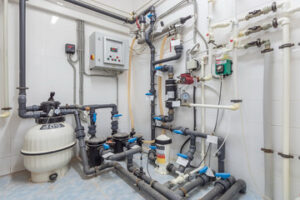Learning the Essentials of Home Plumbing: A Beginner's Introduction
Learning the Essentials of Home Plumbing: A Beginner's Introduction
Blog Article
This great article which follows on the subject of How Does the Plumbing Work in Your Home? is unquestionably insightful. Try it and make your own assumptions.

Plumbing is a vital facet of any type of home, in charge of providing clean water for alcohol consumption, food preparation, and bathing, in addition to getting rid of wastewater securely. Recognizing the basics of home plumbing is crucial for every house owner to make certain proper maintenance, troubleshooting, and, if essential, repairs. In this beginner's overview, we'll cover the basic principles of home plumbing to help you end up being a lot more knowledgeable about exactly how it functions.
Water Furnace
The water heater is in charge of home heating water for domestic use, including bathing, cooking, and cleaning. Typical kinds of water heaters include tank-type water heaters, tankless (on-demand) water heaters, and heat pump water heaters. The water heater is connected to the supply of water system and provides hot water to plumbing components as required.
Water drainage System
The water drainage system gets rid of wastewater from your home and lugs it away to a sewer therapy center or septic tank. It includes a network of pipes, installations, and components that deliver wastewater from plumbing components to the primary drain line or sewage-disposal tank. Appropriate drain is necessary to avoid blockages, backups, and sewage leaks.
Air flow System
The air flow system assists maintain proper atmospheric pressure and protect against drain gases from entering your home. Vent pipelines, additionally known as vent heaps, expand from plumbing components to the roofing system, permitting drain gases to run away safely outdoors. Air flow pipelines likewise permit air to get in the water drainage system, promoting smooth wastewater flow and avoiding suction or vacuum cleaner impacts.
Supply Of Water System
The water supply system brings tidy water into your home from a municipal water resource or a personal well. It contains a primary water line that connects to your home's plumbing system, generally located underground. A water meter measures the quantity of water consumed, while a shut-off shutoff allows you to manage the flow of water right into your home.
Plumbing Fixtures
Plumbing components are devices that provide water to various parts of your home and consist of sinks, taps, bathrooms, showers, bath tubs, and home appliances such as dishwashers and cleaning equipments. Each component is linked to the water supply system by means of pipelines and fittings and might have its shut-off valve for maintenance or emergency situations.
Usual Plumbing Devices
Having the right devices available is crucial for doing standard plumbing repair work and upkeep jobs. Common plumbing tools consist of adjustable wrenches, pipe wrenches, pliers, pipeline cutters, hacksaws, bettors, augers (or drain snakes), and Teflon tape. Having these tools conveniently available can help you tackle minor plumbing problems successfully.
Basic Plumbing Fixings
While some plumbing fixings may call for professional support, many usual issues can be attended to with fundamental do it yourself strategies. Learning exactly how to take care of a dripping faucet, unclog a drain, replace a bathroom flapper, or fix a trickling showerhead can conserve you money and time on plumbing repairs.
Conclusion
Understanding the fundamentals of home plumbing is necessary for every single homeowner to maintain a safe, functional, and efficient plumbing system. By familiarizing yourself with the water supply system, plumbing fixtures, drainage system, air flow system, usual plumbing devices, and standard fixings, you can with confidence attend to small plumbing problems and ensure your home's plumbing system operates efficiently.
Plumbing for Beginners: A Comprehensive Guide
If you’re a beginner when it comes to plumbing, don’t worry; you’re not alone. Plumbing may seem intimidating, but with the right knowledge and a little practice, you can handle many common plumbing issues on your own. In this comprehensive guide, we will demystify the world of plumbing for beginners, providing you with the basic knowledge and skills needed to tackle common plumbing problems and even take on some DIY plumbing projects.
The Importance of Basic Plumbing Knowledge for Beginners:
First and foremost, basic plumbing knowledge gives you a solid foundation. It helps you grasp the key concepts and terminology that are essential in this field. By learning the basics, you’ll be able to build upon that knowledge and tackle more complex plumbing tasks in the future.
Having a basic understanding of plumbing also enables you to handle common issues that may arise in your home. Picture this: a leaky faucet or a clogged drain. With some basic plumbing knowledge, you’ll have the confidence to troubleshoot and fix these problems on your own. It saves you from unnecessary expenses and the hassle of waiting for a professional to arrive.
As a beginner, learning the basics of plumbing empowers you to take care of your own home. It gives you a sense of independence and self-reliance. You’ll no longer have to rely solely on professionals for every small issue that pops up. Instead, you can handle many tasks yourself, saving time and money in the process.
Remember, everyone starts as a beginner. Embrace the learning process and take small steps to expand your plumbing knowledge. There are plenty of online resources, tutorials, and even local workshops that talk about plumbing for beginners.
Essential Tools for Plumbing for Beginners
As you start your plumbing journey, having the right tools in your toolbox is crucial. Let’s explore some of the must-have tools:
Adjustable Wrench:
This versatile tool is a staple in any plumber’s toolbox. It allows you to tighten or loosen nuts and bolts of various sizes. Make sure to have an adjustable wrench with a comfortable grip.
Pipe Wrench:
A pipe wrench is specifically designed for gripping and turning pipes. It has serrated jaws that provide a strong grip, making it easier to loosen or tighten threaded pipes and fittings.
Plunger:
The plunger is a simple yet effective tool for clearing clogged drains and toilets. It creates suction when you push and pull, helping to dislodge blockages. Keep a good-quality plunger handy for those unexpected clogs.
Pipe Cutter:
When it comes to cutting pipes, a pipe cutter is your go-to tool. It creates clean, precise cuts without damaging the pipe. Look for a pipe cutter that can handle the pipe sizes you’re working with.
Hacksaw:
A hacksaw is useful for cutting through pipes, screws, and other materials. It’s a versatile tool that can handle different cutting tasks. Remember to use a blade suitable for cutting metal.
Tape Measure:
Accurate measurements are crucial in plumbing. A tape measure allows you to measure pipe lengths, distances, and dimensions accurately. Opt for a sturdy tape measure that extends a good length.
Pliers:
Pliers come in handy for various tasks, such as gripping, bending, and cutting. Slip-joint pliers with adjustable jaws are great for gripping pipes, nuts, and bolts.

As a passionate reader on Plumbing Basics For Every Home: The HomeTriangle Guide, I imagined sharing that topic was a smart idea. Sharing is caring. Who knows, you may just be helping someone out. I am grateful for being here. Don't hesitate to check up our site back soon.
Request Free Estimate Report this page